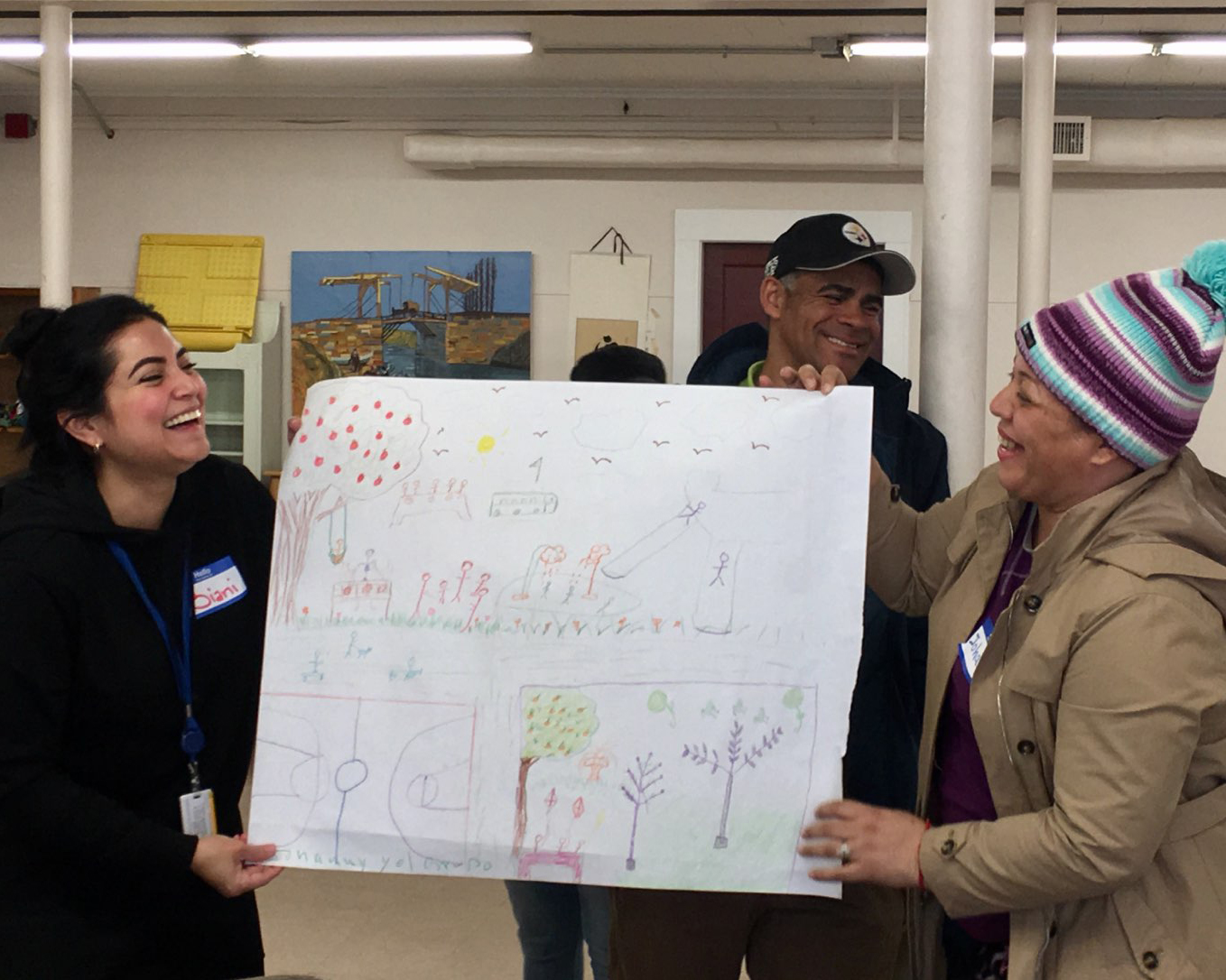Community Planning
Community Planning: Working with Stakeholders
We work with stakeholders who share our goals to identify policy, systems, and environmental change priorities through community assessment and planning processes. Scroll down to see examples of the work we’ve done and continue to do.

Community-wide Assessment and Planning
Williamsburg Healthy Aging and Community Design
Healthy Hampshire collaborated with the Pioneer Valley Planning Commission (PVPC), the Williamsburg Council on Aging, and WalkMassachusetts on a project that examined how healthy aging in Williamsburg is affected by the Town’s community design. This report details the findings and recommendations resulting from that project.
SDAT: Sustainable Design Assessment Team
In 2016, Healthy Hampshire, in partnership with Hilltown Community Health Centers (HCHC) and the Hilltown Community Development Corporation (HCDC), hosted a Sustainable Design Assessment Team (SDAT) from the American Institute of Architects (AIA) to facilitate a series of meetings focused on increasing opportunities for healthy eating and active living in 10 Hilltown communities. The SDAT program sent a team of volunteer professionals from a variety of disciplines to work on sustainable design issues. The team produced a report which establishes a vision and recommendations for 6 domains: food, mobility, economy, housing, open space, and social connectivity.
Hilltown Health Assessment
In 2016, Healthy Hampshire conducted an assessment of 10 Hilltowns in Hampshire and Hampden counties to identify policies and practices that:
- Promote walking through groups, maps, walking routes, or the MassDOT Complete Streets Program.
- Establish formal and informal community use agreements that support increased access to recreational opportunities.
- Increase access to healthy food, particularly for low-income residents, through small stores, gas stations, food pantries, farm shares, farm stands, or other food sites.
Food System Assessment and Planning
Healthy Hampshire Food Access Assessment
Healthy Hampshire conducted a Food Access Assessment between 2016 and 2017 to inform Cooley Dickinson Health Care’s community benefits strategies around food access. This report highlights the results of that assessment process. As part of the Food Access Assessment process, we spent five months bringing together a Food Access Advisory Committee made up of professionals and residents who were dealing with food insecurity to assess current conditions and propose an action plan to reduce barriers to food access in Hampshire county. The Food Access Advisory Committee produced the Food Access Action Plan Matrix, which helped craft the recommendations included in the Food Access Assessment Report.
Hampshire County Food Access Map
The Hampshire County Food Access Map is an online map produced by the Pioneer Valley Planning Commission (PVPC) as part of Healthy Hampshire’s Food Access Assessment. It provides a visual representation of healthy food proximity for all points in Hampshire County and reveals areas of the county likely to have a high percent of households with food access challenges based on demographic factors. More information about how to interpret the map can be found in this report.
Amherst Food Justice Report and Action Plan
In 2018, Healthy Hampshire partnered with the Center for Human Development’s Family Outreach of Amherst (FOA) to facilitate conversations about the concept and causes of food insecurity at FOA’s monthly community lunches, which brought together underserved residents to socialize and learn about resources and opportunities available to them. In order to bring Amherst practitioners who were working on aspects of food insecurity into the conversation with Amherst residents, Healthy Hampshire initiated an Amherst Food Justice Planning Process in 2019. This report describes the Amherst Food Justice Planning process and its outcomes.
Active Transportation Assessment and Planning
Walk-Friendly Hilltowns
Along with Hilltown Community Development, Healthy Hampshire works to increase pedestrian safety and create walk-friendly environments for people of all ages across the Hilltowns. This work includes collaborating with community stakeholders to conduct walk audits, change policy, identify funding sources, make infrastructure improvements, and create a culture of walkability within communities. As part of this project, Healthy Hampshire and Hilltown Community Development have gathered walking enthusiasts and advocates to facilitate a process of identifying walkable street, sidewalk, and trail routes to map and publicize within communities, with a focus on accessibility, connectivity, and cultural aspects of the town. Click below to see maps for:
Urban, Rural, and Suburban Complete Streets Design Manual for the City of Northampton and Communities in Hampshire County
This guide is intended for local planners, engineers, and advocates to improve the walkability and bikeability of roadways in their communities and create safer streets for users of all ages and abilities. The guide can be used to help communities identify appropriate Complete Streets design elements for a variety of thoroughfares ranging from local roads in densely settled areas to state highways with high traffic volumes and speeds.
